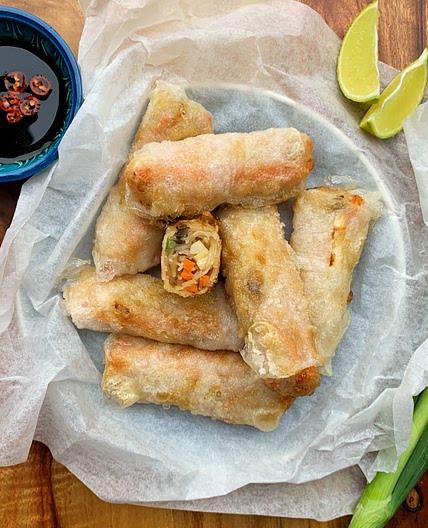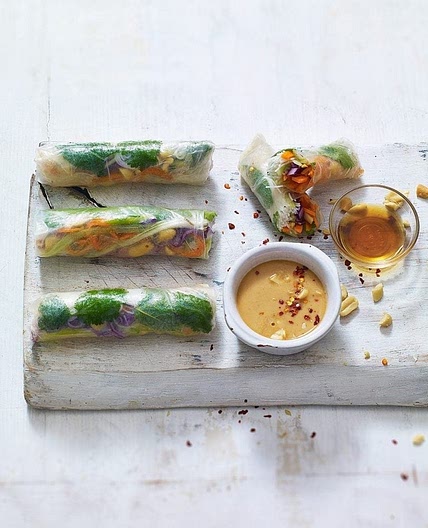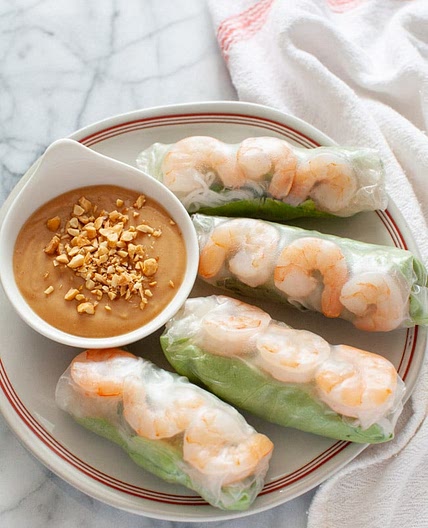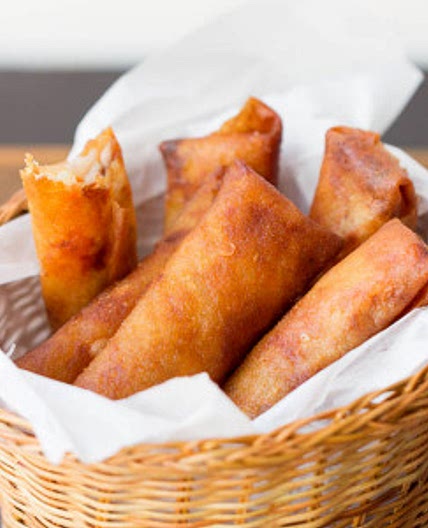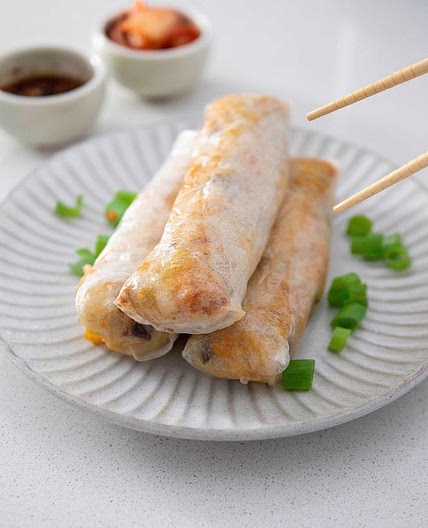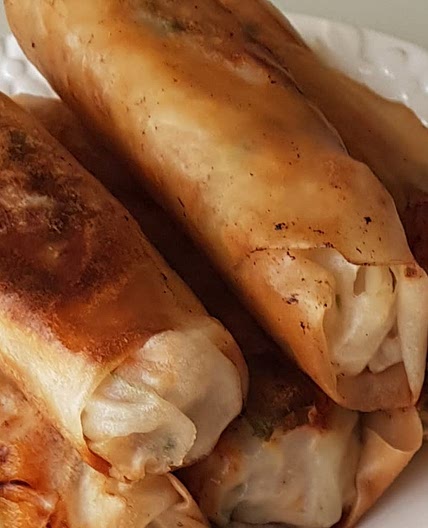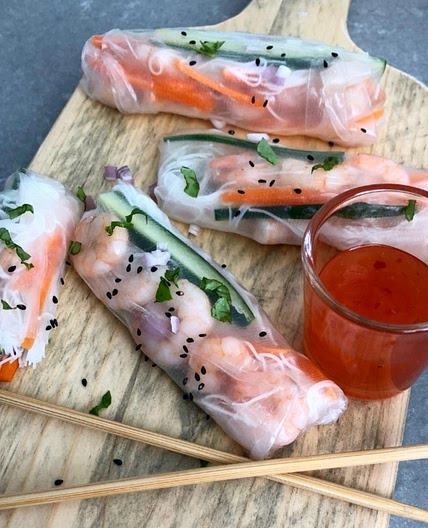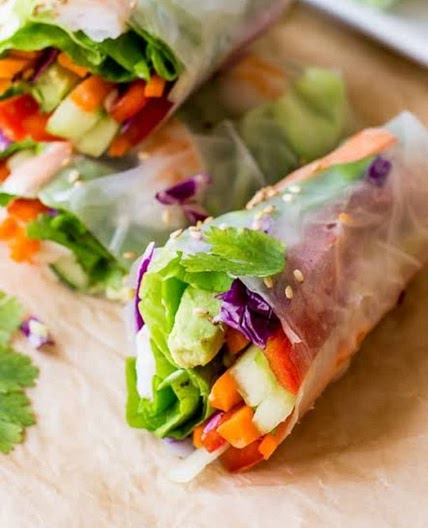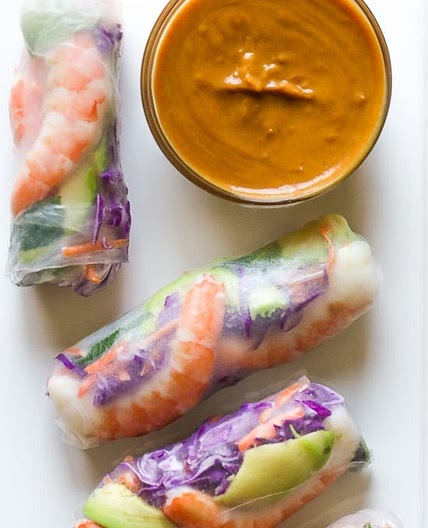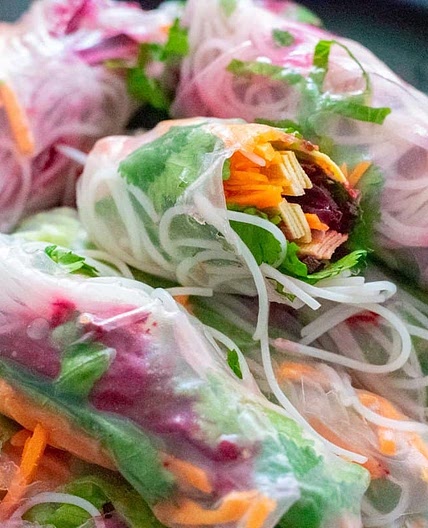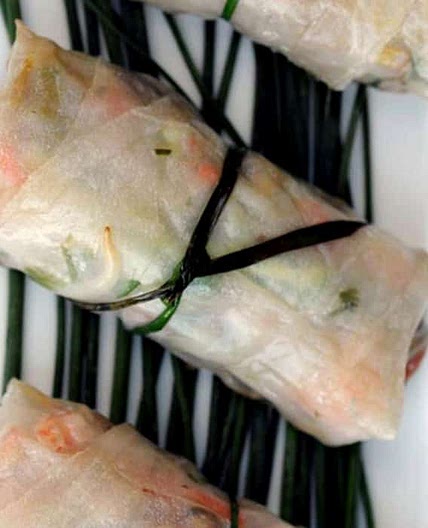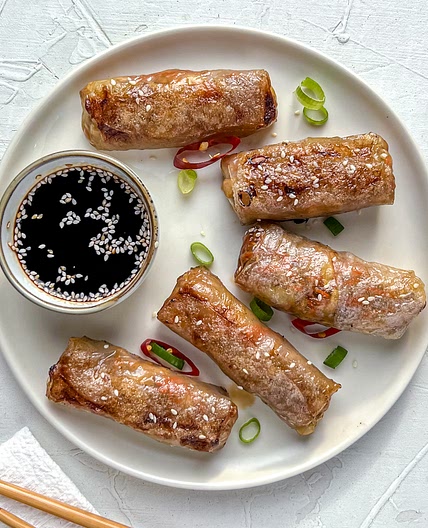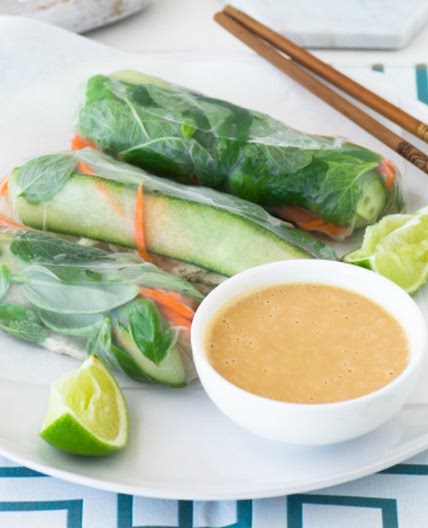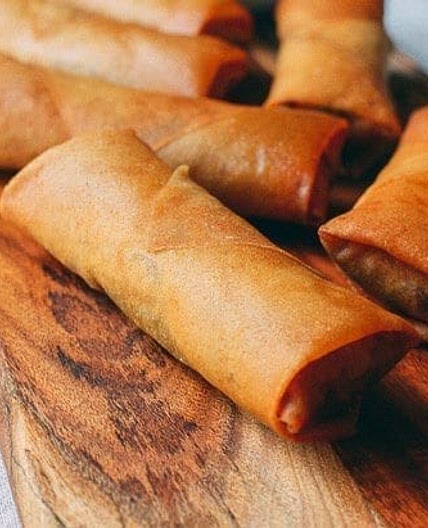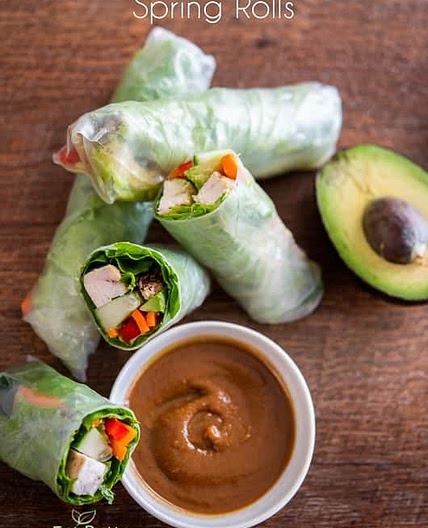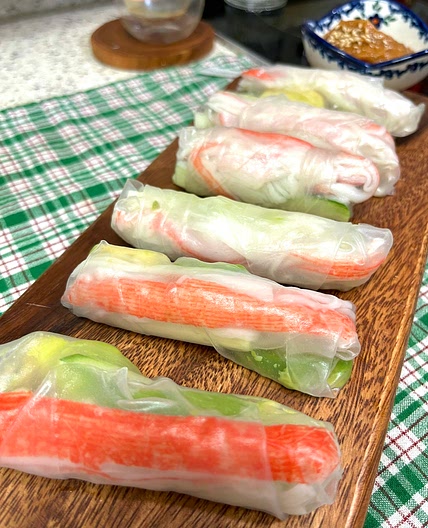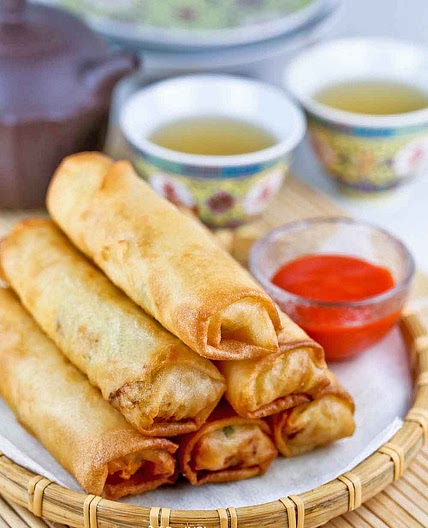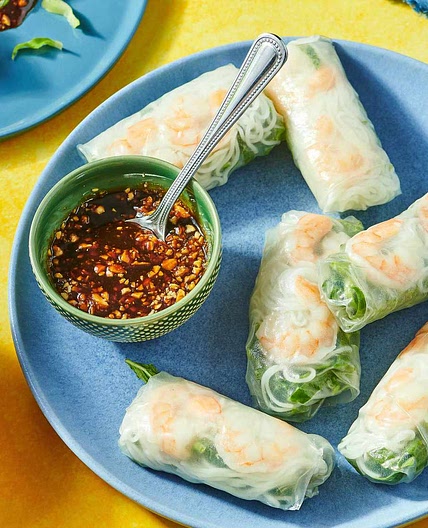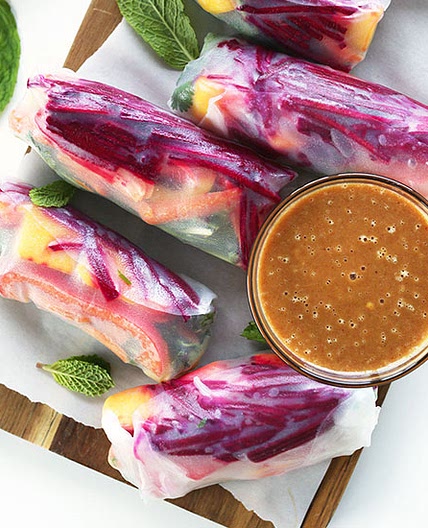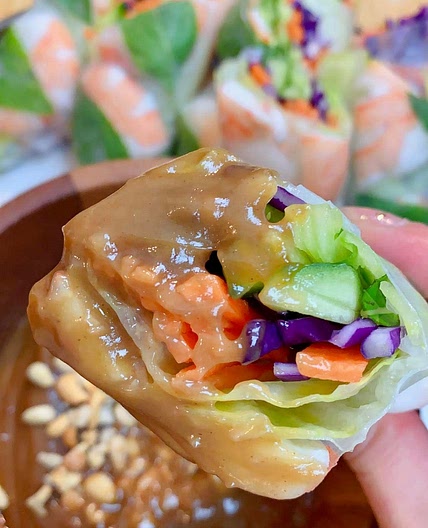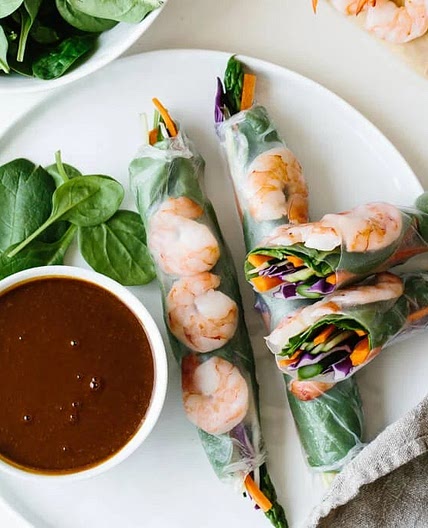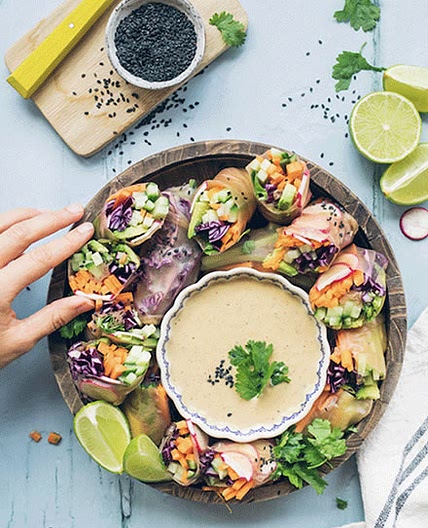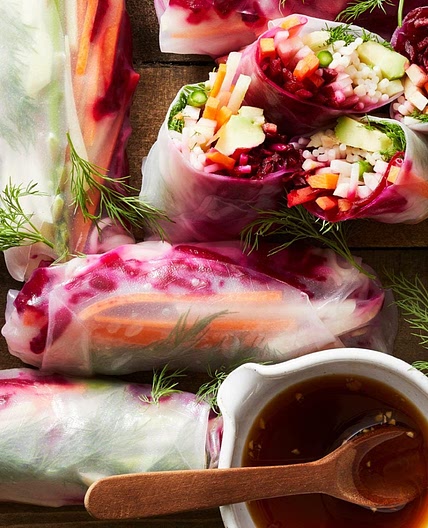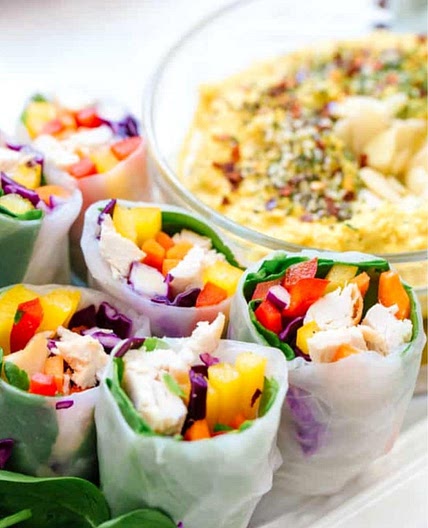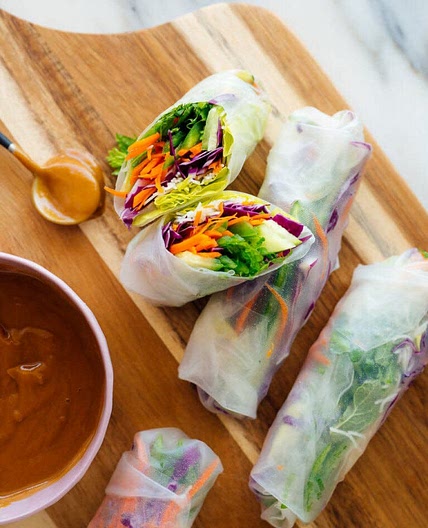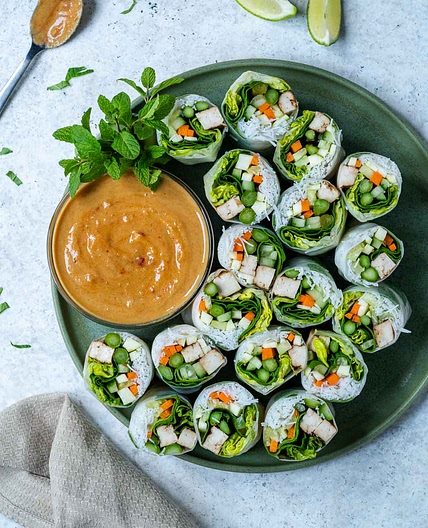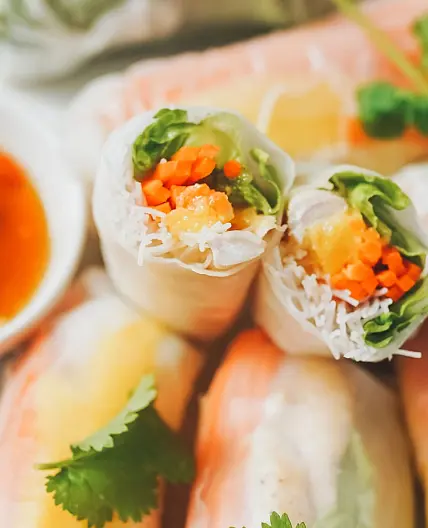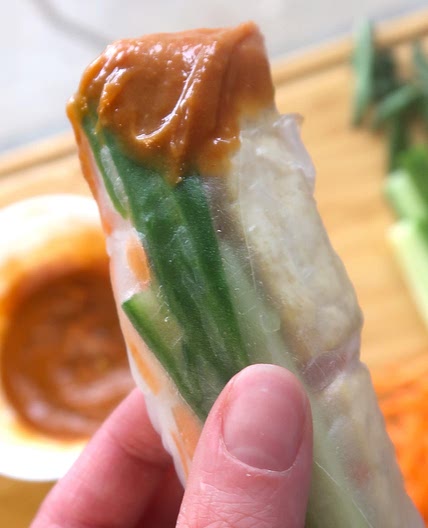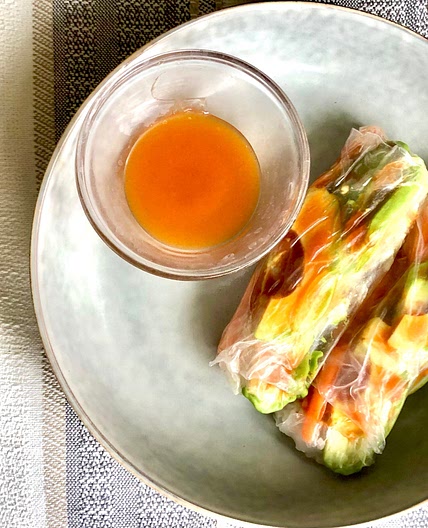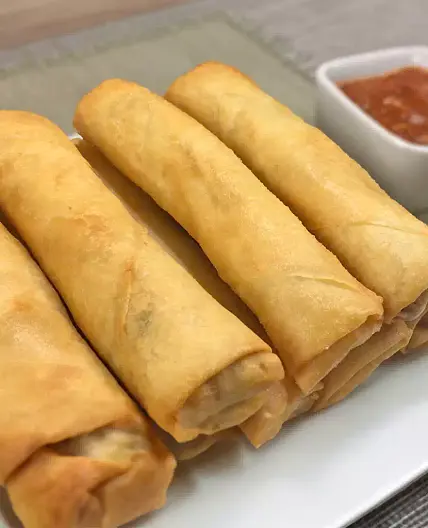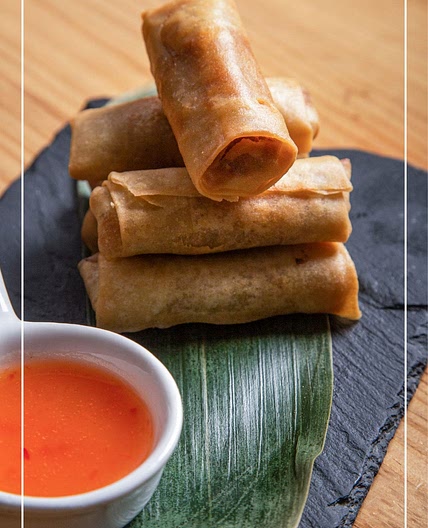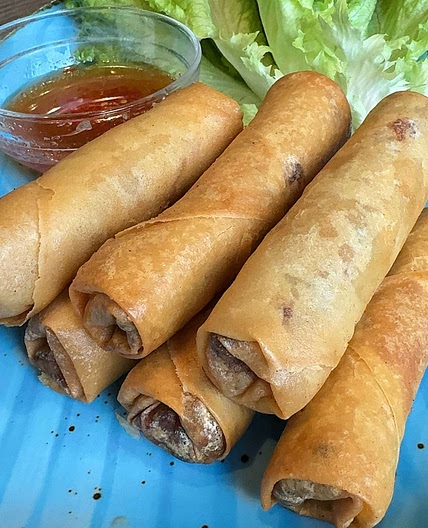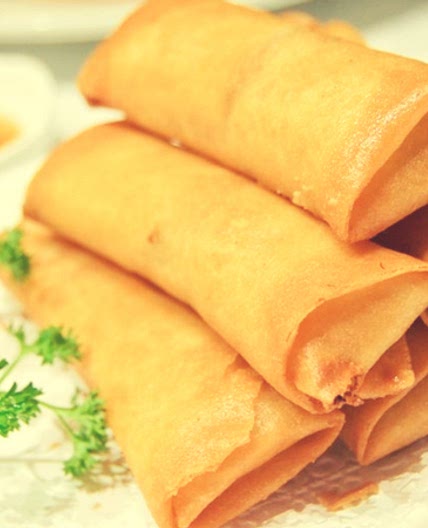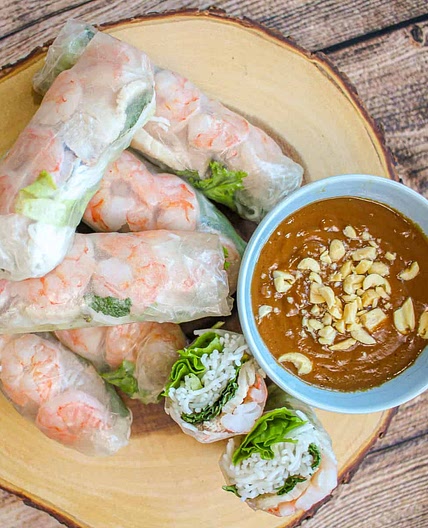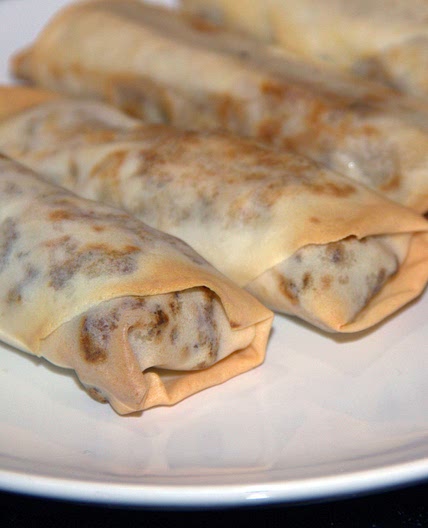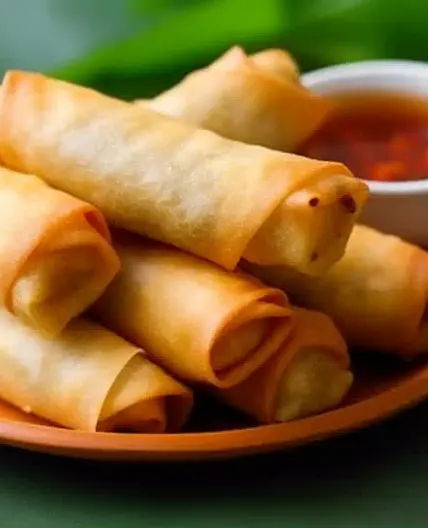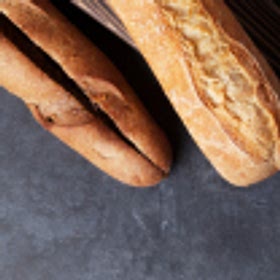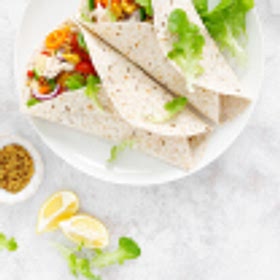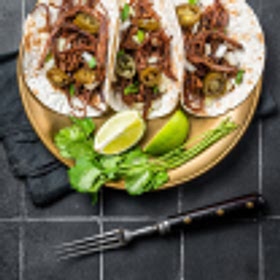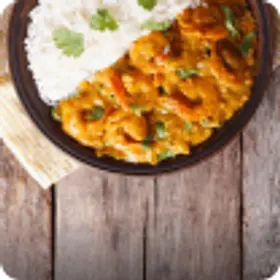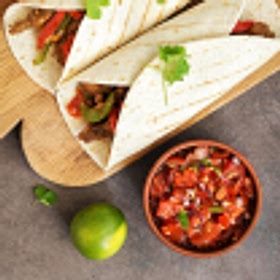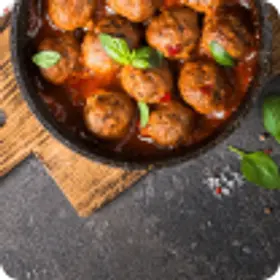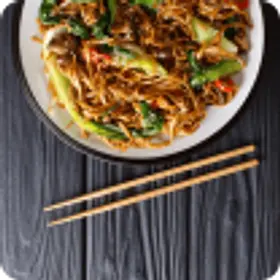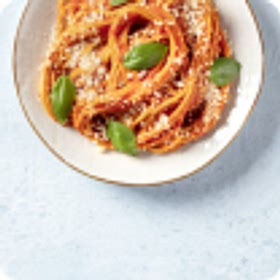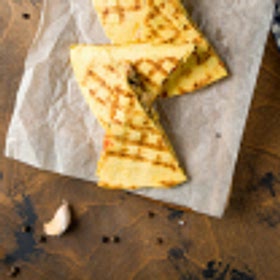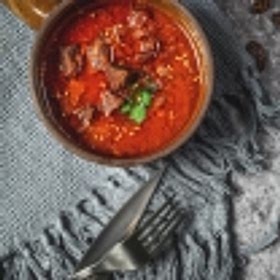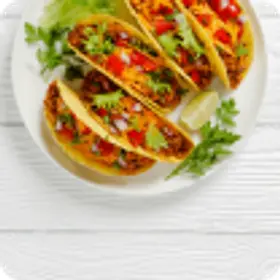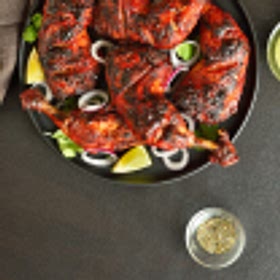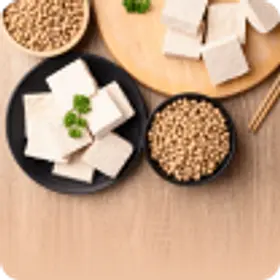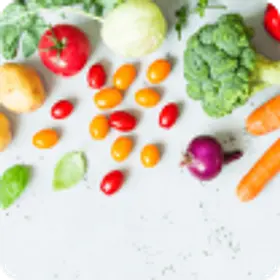Spring Rolls: A Crispy, Fried Favorite
From their origins in Asian cuisine to the art of rolling and dipping, explore the enticing world of spring rolls and how they have become a popular choice for appetizers and light meals.
Nutrition per serving size(136g)
- Energy: 0
- Total Fat: 0
- Saturated Fat: 0
- Carbohydrate Total: 0
- Sugars: 0
- Protein: 0
- Sodium: 0
- Fiber: 0
- Trans Fat: 0
- Monounsaturated Fat: 0
- Polyunsaturated Fat: 0
- Cholesterol: 0
- Calcium: 0
- Magnesium: 0
- Potassium: 0
- Iron: 0
- Zinc: 0
- Phosphorus: 0
- Vitamin A: 0
- Vitamin C: 0
- Thiamin B1: 0
- Riboflavin B2: 0
- Niacin B3: 0
- Vitamin B6: 0
- Folic Acid B9: 0
- Vitamin B12: 0
- Vitamin D: 0
- Vitamin E: 0
- Vitamin K: 0
- Tryptophan: 0
- Alpha Carotene: 0
- Beta Carotene: 0
- Omega 3 DHA: 0
- Omega 3 EPA: 0
Photo by Alexandra Tran on Unsplash
Spring rolls are a beloved dish in Asian cuisines, especially in the United States. A harmony of crisp vegetables, aromatic herbs, and succulent proteins in a delicate rice paper wrapper, spring rolls are renowned for both their refreshing taste and visual appeal. Here, we’ll dive into the origins, ingredients, rolling techniques, and dipping sauces that make spring rolls an irresistible choice for foodies across the world.
The Origins of Spring Rolls
Photo by Joshua Hoehne on Unsplash
Spring rolls were traditionally consumed in ancient China during the spring season to celebrate the arrival of new vegetables. Over time, they spread throughout Southeast Asia, each region adding its own unique twist and variation to the classic recipe. Today, spring rolls have become a beloved dish enjoyed in countless cultures and cuisines.
Spring Roll Ingredients
At the heart of every spring roll lies a medley of vibrant and crisp ingredients. Thin rice paper wrappers encase a variety of fillings, typically consisting of julienne-cut vegetables such as carrots, bell peppers, cucumber, and bean sprouts. Fresh herbs like cilantro, mint, and basil provide a burst of fragrant flavors, while proteins like shrimp, chicken, or tofu add a satisfying texture. The combinations are endless, allowing for endless customization and personalization.
Variations and Adaptations
Spring rolls have evolved to cater to different dietary preferences and cultural influences. Vegetarian and vegan versions replace the proteins with tofu or textured vegetable protein, offering a delightful plant-based alternative. Some regions feature spring rolls with a cooked filling, while others focus on the raw and refreshing components. The beauty of spring rolls lies in their versatility, allowing for endless experimentation and adaptation.
Spring Roll Dipping Sauces
While you can enjoy spring rolls without a dipping sauce, the sauce is half the fun! Spring rolls almost always come with an accompanying dipping sauce to elevate the flavors and provide an additional layer of taste.
Popular sauces include sweet chili sauce, peanut sauce, hoisin sauce, and soy sauce. These condiments offer contrasting flavors—sweet, savory, tangy, or nutty—and complement the freshness of the spring rolls.
How to Roll Spring Rolls
Photo by Joshua Hoehne on Unsplash
Rolling spring rolls is a fun, creative culinary experience that will make you feel like a five-star chef!
When you soak rice paper wrappers in water, it softens them, making them pliable for rolling. With your chosen filling strategically placed in the center of the rice paper, fold the sides over before rolling the paper tightly to create a neat and compact parcel. You probably won’t do it perfectly your first time, but keep at it and you’ll find that it becomes rewarding (and eventually delicious).
FAQs
How do I make spring rolls step by step?
While specific recipes may vary, here’s a general step-by-step guide:
- Prepare the fillings by julienning vegetables, chopping herbs, and cooking proteins if desired.
- Fill a shallow dish with warm water and dip one rice paper wrapper at a time until it becomes pliable.
- Place the wrapper on a flat surface and add a small amount of fillings in the center.
- Fold the sides over the fillings, then tightly roll the wrapper from bottom to top, ensuring a secure seal.
- Repeat the process with the remaining wrappers and fillings.
- Serve the spring rolls fresh with dipping sauces.
What can I serve with spring rolls?
Spring rolls pair well with a variety of accompaniments. Common options include a side of steamed rice, a vibrant salad, or a bowl of hot and sour soup. They can also be enjoyed as part of a larger Asian-inspired meal, alongside dishes like fried rice, stir-fried noodles, or coconut curry.
Are spring rolls gluten-free?
Traditional rice paper wrappers used in spring rolls are typically gluten-free. However, it’s essential to check the labels of store-bought wrappers and sauces to ensure they are gluten-free, as some may contain additives or soy sauce with gluten.


